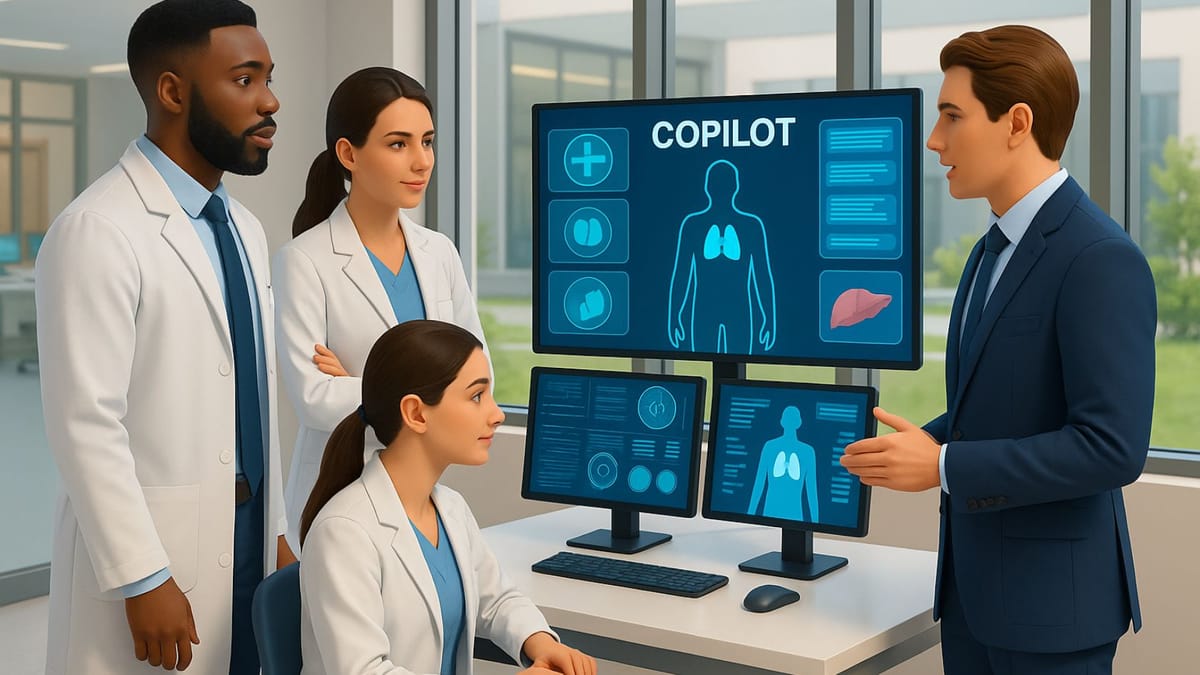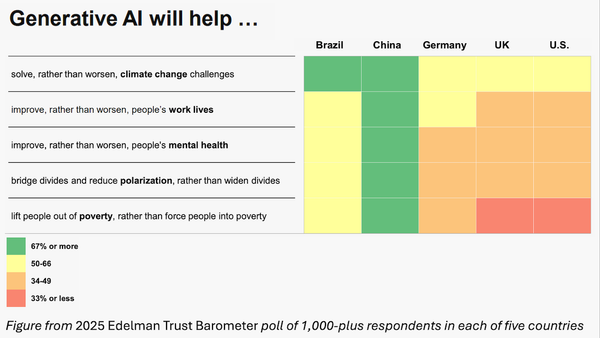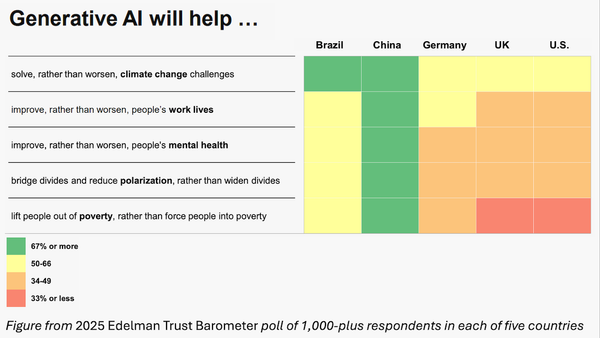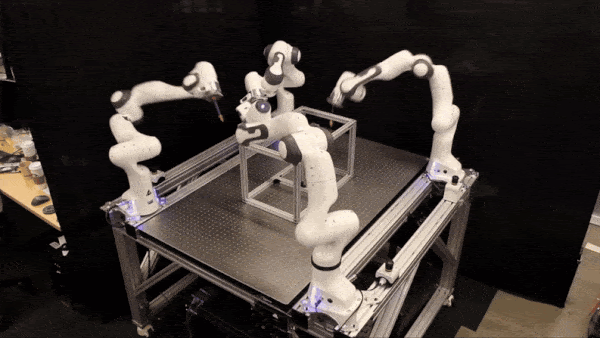Figure AI unveils its third-generation robot: Microsoft’s healthcare data partnership with Harvard
AI companies’ dominance of global venture funding. Samsung’s 7-million-parameter Tiny Recursion Model. The U.S.–UAE agreement for 500,000 Nvidia GPUs annually. IBM’s embrace of Anthropic’s Claude models for enterprise.

In today’s edition of Data Points, you’ll learn more about:
- AI companies’ dominance of global venture funding
- Samsung’s 7-million-parameter Tiny Recursion Model
- The U.S.–UAE agreement for 500,000 Nvidia GPUs annually
- IBM’s embrace of Anthropic’s Claude models for enterprise
But first:
Microsoft partners with Harvard to reduce dependence on OpenAI
Microsoft is collaborating with Harvard Medical School to enhance its Copilot chatbot with credible healthcare information, aiming to deliver a better healthcare offering than rival AI chatbots and build the brand of its Copilot assistant. The updated Copilot, launching this month, will draw on content from Harvard Health Publishing to answer medical queries, with Microsoft paying a licensing fee. The company is training its own models with the goal of eventually replacing workloads that currently rely on OpenAI's models, though this may take years. (The Wall Street Journal)
OpenAI enables third-party apps to run inside ChatGPT
OpenAI introduced apps that users can access directly within ChatGPT conversations, along with an Apps SDK that developers can use to build these apps. Users can call up apps by name (such as "Canva, design a poster") or have ChatGPT suggest relevant apps during conversation. Initial partners include Booking.com, Coursera, Figma, and Spotify. The Apps SDK builds on the Model Context Protocol, an open standard that allows ChatGPT to connect to external tools and data. OpenAI will begin accepting app submissions for review later this year and plans to share monetization guidance soon, including ways for developers to charge users through its Agentic Commerce Protocol. (OpenAI, TechCrunch, VentureBeat)
AI companies capture nearly half of global venture funding
Global venture funding increased 38 percent year-over-year to $97 billion in the third quarter, with AI companies receiving 46 percent of that total. Foundation model companies raised the three largest venture rounds: Anthropic secured $13 billion, xAI raised $5.3 billion, and Mistral AI received $2 billion. Anthropic alone accounted for 29 percent of all global AI venture funding in the quarter. U.S.-based companies dominated overall funding, capturing $60 billion of the global total. Hardware companies raised the second-largest amount at $16.2 billion, followed by healthcare and biotech at $15.8 billion, according to data from Crunchbase. (Reuters)
Samsung tiny model matches far larger ones on reasoning puzzles
Alexia Jolicoeur-Martineau, a senior AI researcher at Samsung's Advanced Institute of Technology, introduced the Tiny Recursion Model (TRM), a neural network with just 7 million parameters that matches or exceeds models 10,000 times larger on specific reasoning benchmarks. TRM uses a single two-layer network that recursively refines its predictions, achieving 87.4 percent accuracy on Sudoku-Extreme, 85 percent on Maze-Hard, 45 percent on ARC-AGI-1, and 8 percent on ARC-AGI-2. These results are comparable to those of DeepSeek-R1, Gemini 2.5 Pro, and o3-mini while using less than 0.01 percent of their parameters. The code is available on GitHub under an MIT License. (arXiv, VentureBeat)
U.S. authorizes Nvidia to ship 500,000 AI GPUs annually to UAE
The U.S. government granted Nvidia an export license to ship advanced AI GPUs to the United Arab Emirates, following a May agreement that allows the UAE to purchase up to 500,000 Nvidia processors annually while committing $1.4 trillion of investment in the U.S. over the next decade. The AI accelerators will be operated by American companies with datacenters in the UAE, not by Abu Dhabi-based AI company G42, though G42 will receive 20 percent of AI processors bound for the UAE in future shipments. The policy shifts away from the Biden administration's restrictions on AI chip exports and establishes bilateral frameworks where allies commit to using U.S.-operated cloud infrastructure. (Tom’s Hardware)
IBM to integrate Claude models into its enterprise software
IBM will embed Anthropic’s Claude large language models into its software, starting with its integrated development environment for select customers. The partnership also produced a guide for enterprises on building, deploying, and maintaining AI agents, though financial terms remain undisclosed. A recent Menlo Ventures study found enterprises increasingly favor Claude over other AI models, including OpenAI’s, whose usage has declined since 2023. This collaboration underscores Anthropic’s push into the enterprise market, highlighted by its recent deal with Deloitte to deploy Claude to nearly 500,000 employees. (TechCrunch)
Want to know more about what matters in AI right now?
Read the latest issue of The Batch for in-depth analysis of news and research.
Last week, Andrew Ng talked about his new course, Agentic AI, which focused on teaching agentic design patterns and best practices for building effective AI agents.
“Having worked with many teams on many agents, I’ve found that the single biggest predictor of whether someone can build effectively is whether they know how to drive a disciplined process for evals and error analysis. Teams that don’t know how to do this can spend months tweaking agents with little progress to show for it.”
Read Andrew’s letter here.
Other top AI news and research stories covered in depth:
- Anthropic introduces Claude Sonnet 4.5 and Claude Agent SDK, offering developers an overhauled Claude Code.
- OpenAI and Meta diversify their offerings with new social video apps, as ChatGPT integrates Pulse and Instant Checkout.
- Alibaba expands its AI capabilities with the Qwen3 family, featuring a 1 trillion-parameter model, open-weights Qwen3-VL, and Qwen3-Omni voice model.
- Text-to-LoRA technology enables the generation of task-specific LoRA adapters directly from natural language descriptions.




